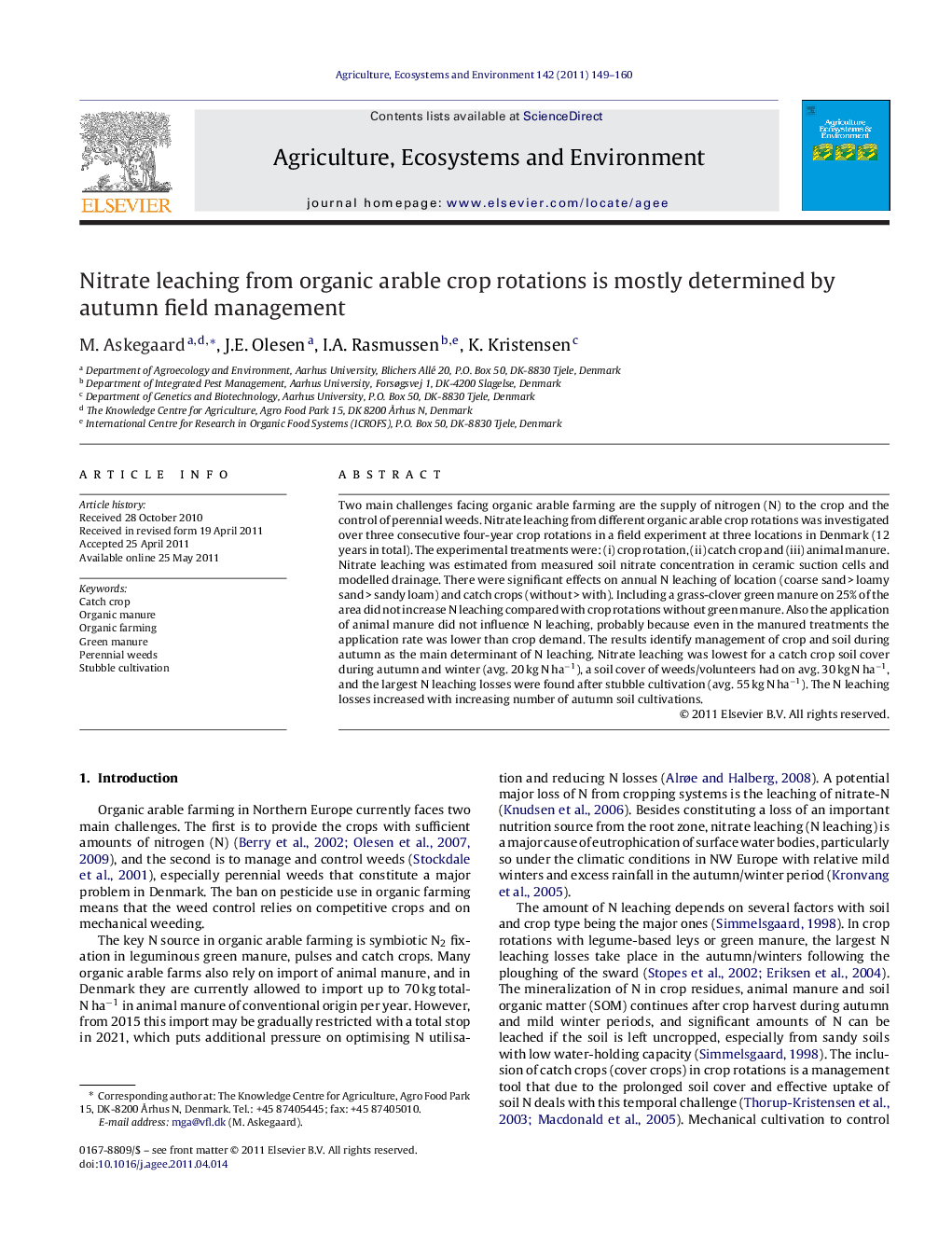| Article ID | Journal | Published Year | Pages | File Type |
|---|---|---|---|---|
| 2414660 | Agriculture, Ecosystems & Environment | 2011 | 12 Pages |
Two main challenges facing organic arable farming are the supply of nitrogen (N) to the crop and the control of perennial weeds. Nitrate leaching from different organic arable crop rotations was investigated over three consecutive four-year crop rotations in a field experiment at three locations in Denmark (12 years in total). The experimental treatments were: (i) crop rotation, (ii) catch crop and (iii) animal manure. Nitrate leaching was estimated from measured soil nitrate concentration in ceramic suction cells and modelled drainage. There were significant effects on annual N leaching of location (coarse sand > loamy sand > sandy loam) and catch crops (without > with). Including a grass-clover green manure on 25% of the area did not increase N leaching compared with crop rotations without green manure. Also the application of animal manure did not influence N leaching, probably because even in the manured treatments the application rate was lower than crop demand. The results identify management of crop and soil during autumn as the main determinant of N leaching. Nitrate leaching was lowest for a catch crop soil cover during autumn and winter (avg. 20 kg N ha−1), a soil cover of weeds/volunteers had on avg. 30 kg N ha−1, and the largest N leaching losses were found after stubble cultivation (avg. 55 kg N ha−1). The N leaching losses increased with increasing number of autumn soil cultivations.
► Nitrogen leaching was affected by location and use of catch crops. ► Nitrogen leaching was not affected by manure application and green manure. ► Autumn/winter soil management was the main determinant of N leaching. ► Residual effects of catch crops can increase N leaching.
